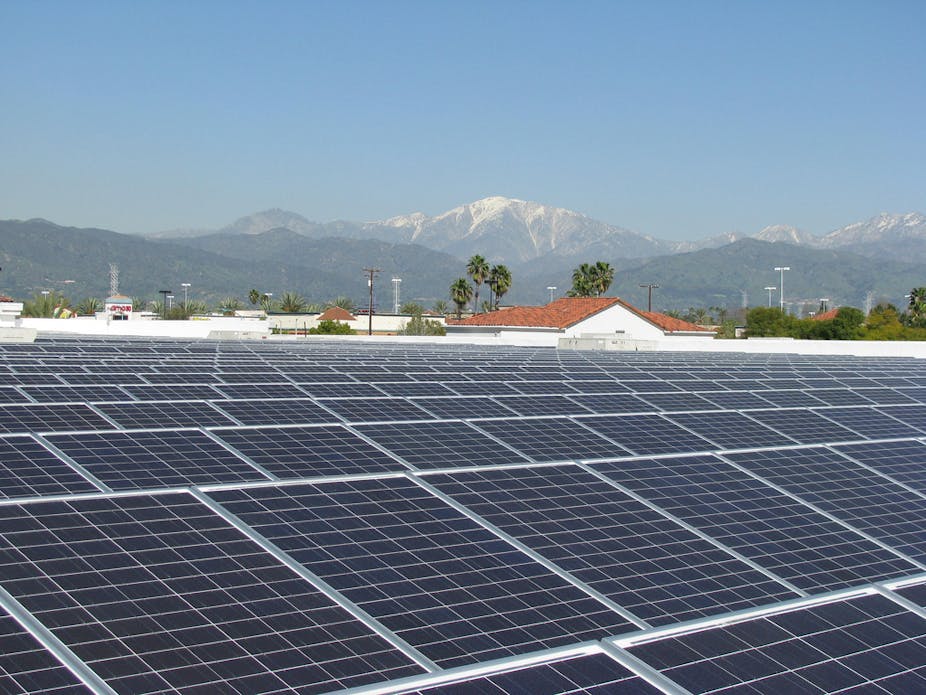The $10 billion Clean Energy Finance Corporation (CEFC) has just passed the Senate and is now law. For all the attention it has received you may not have noticed, but a new industrial revolution is afoot.
A clean energy boom that continues to go from strength to strength saw $260 billion invested last year in renewable energy. That’s a new investment record. In fact, four of the last five years have seen the previous year’s record surpassed.
Last year was the first year global investment in clean energy outstripped investment in traditional fossil fuel energy. In Australia, wind and solar accounted for nearly 60% of the new installed capacity last year.
The CEFC will be at the vanguard of this revolution. It is in essence a public investment bank. It will have at its disposal a suite of innovative financing tools to address the many barriers to investment in clean energy technologies.
By providing loan guarantees, the CEFC can make innovative projects more attractive to commercial lenders who might otherwise worry that the technology is “unproven”. By overcoming these kinds of barriers, it will attract sufficient private finance to make viable the next wave of clean energy technologies in Australia.
Done properly, the CEFC could unlock $100 billion of private investment in technologies like big solar, geothermal or bioenergy, and create up to 100,000 new jobs. Done properly, it will kick-start our shift to a clean energy economy, helping us catch up to countries that are currently way ahead of us, like China, the USA and Germany.
Despite these benefits, however, the CEFC is being criticised from all sides. Its opponents call it the “Bob Brown Bank” and wrongly label it a slush fund. It is also panned by would-be supporters for being ineffectual, because it can’t invest in projects that would contribute above the 20% of our energy supply that will come from renewables by 2020 under the Renewable Energy Target (RET).
As it stands the CEFC is a powerful tool for driving positive change in our energy mix. It could be made vastly more effective if the impediment of the 20% target was removed.
The CEFC will provide many benefits. First, it will deliver us crucial diversity in energy supply. While the RET favours the lowest cost clean energy (at the moment, wind), the CEFC will allow the next wave of technologies to make it to market. These are technologies on the brink of commercialisation; technologies that other countries have supported and proved. Spain, for instance, dominates large-scale solar thermal, despite its average solar radiation only being equivalent to Melbourne’s.
Second, in bringing these new technologies forward, the CEFC will help Australia build new industries, with new jobs and new export opportunities. Why should Spain lead the way in solar technologies and Scotland be creeping ahead of us in wave energy? Why do we sit back and see more solar power installed in Germany than here? Why not use our trademark innovation, ingenuity and manufacturing base to establish these and other clean energy technologies here and export them to the world? Our renewable resources – solar, wind, wave, geothermal energy – are the envy of the world. It is time to develop these to provide clean energy.
Third, the CEFC will deliver a suite of technologies that together will help end our dependence on increasingly expensive fossil fuels. Without a booming and diverse clean energy sector, how else will we achieve the legislated 80% reduction in Australia’s greenhouse pollution by 2050?
All this demonstrates that the CEFC can build new energy supply systems that will transform our economy into a modern, clean and competitive one – an economy that can compete globally in a low-carbon future. But reaching this goal will be constrained in the short term if the CEFC is not allowed to invest above and beyond the 20% by 2020 Renewable Energy Target. This is a limitation that the government must address during this year’s review of the RET.
But this does not mean that there aren’t several excellent reasons to go ahead with the CEFC anyway. A clean energy finance corporation is not a risky, scary endeavour that is unique to Australia. The UK is implementing a Green Investment Bank. The US is now considering a Clean Energy Deployment Agency, having successfully delivered the Loan Guarantees program for clean energy. A Nordic Environment Finance Corporation operates across Scandinavia and the Netherlands is working on a Green Investment Corporation. China is making huge investments in clean energy, with future plans that will leave the rest of the world for dead.
The clean energy race is one Australia simply cannot afford to lose. The CEFC is our best chance to get out in front.
This article was co-authored by Claire Maries. Claire is a climate change campaigner at the Australian Conservation Foundation.

